Cordova Gansey Project: The Long Story (cont.) #2
Share
Shetland Islands #2 The next nudge...for the love of sheep... the list
The next day of my Shetland Islands Wool Week Adventure, I was pretty overwhelmed from all that I had experienced thus far, and needed to catch my breath. The place I had chosen to stay for the week was more of a bit of a drive than I had anticipated. The night before, after a full day of classes and activities, I had arrived in the dark after driving for quite some time with a few sheepish friends that joined in here and there. It was late, and I was very very tired.
My little spot at Vementry Farm was at the end of the road beyond the town of Aith. When I awoke (late, mind you, weary from the travel) to see the scene from my sheep farm croft cottage at the edge of the sea, the panorama took my breath away, but hardly had a minute to catch it (my breath), for I had to make haste to get back down the road and off to Lerwick for my first class of the day, even though the view from my little Shetland home for the week beckoned me to stay.
There was no such thing as rushing on the small lane I had to travel leaving Vementry, and trying to acclimate to driving with the steering wheel on the right didn't help, even though the inside of me was racing at full speed. I had a workshop on Fair Isle Knitting with Hazel Tindall on my schedule for the morning, and I was desperate not to be tardy, but it was too late for that. I could only drive so fast, and there was no way I could make up the time. The class was on "Designing Fair Isle yokes for Round Yoke Jumpers and Cardigans". I took a deep breath and walked in late, with my head held low as class was already in session. I didn't like having to race to get caught up with the class, but I loved hearing the stories Hazel shared and tried to soak up every drop I could of the colorwork and design of her samples on the table.
If you are interested in The Art of Fair Isle Knitting, Hazel has an excellent DVD on the subject and worth investing in. http://www.hazeltindall.com/dvd She is a great instructor and grateful I could attend even though I was a little frazzled.
I now could really take a deep breath I had no afternoon class, and so I finally had some free time to explore the museum and read through the literature provided in our welcome pack, and so, after milling around the museum, sitting down for a rest and quietly leafing through papers seemed like a really good idea. I found myself a cozy corner and I began to read through the brochures they had given us. There was one document in particular from the Campaign for Wool that I was compelled to read over and again . I had seen it somewhere before, but this time I read it extra intently. Much of it I already knew, but there it was, point by point, in black and white, all the features of wool that make it such an excellent fiber.
This is the list that I read again and again...Take time to read it slowly, it's worth the read.
WHY WOOL?
NATURAL Wool is a protein fibre formed in the skin of sheep, and is thus one hundred percent natural, not man-made. Since the Stone Age, it has been appreciated as one of the most effective forms of all-weather protection known to man, and science is yet to produce a fibre which matches its unique properties.
RENEWABLE As long as there is grass to graze on, every year sheep will produce a new fleece; making wool a renewable fibre source. Woolgrowers actively work to safeguard the environment and improve efficiency, endeavoring to make the wool industry sustainable for future generations.
BIODEGRADABLE At the end of its useful life, wool can be returned to the soil, where it decomposes, releasing valuable nutrients into the ground. When a natural wool fibre is disposed of in soil, it takes a very short time to break down, whereas most synthetics are extremely slow to degrade.
NATURAL INSULATOR Wool is a hygroscopic fibre. As the humidity of the surrounding air rises and falls, the fibre absorbs and releases water vapour. Heat is generated and retained during the absorption phase, which makes wool a natural insulator. Used in the home, wool insulation helps to reduce energy costs and prevents the loss of energy to the external environment, thus reducing carbon emissions.
BREATHABLE Wool fibres are crimped, and when tightly packed together, form millions of tiny pockets of air. This unique structure allows it to absorb and release moisture—either in the atmosphere or perspiration from the wearer—without compromising its thermal efficiency. Wool has a large capacity to absorb moisture vapour (up to 30 per cent of its own weight) next to the skin, making it extremely breathable.
RESILIENT & ELASTIC Wool fibres resist tearing and are able to be bent back on themselves over 20,000 times without breaking. Due to its crimped structure, wool is also naturally elastic, and so wool garments have the ability to stretch comfortably with the wearer, but are then able to return to their natural shape, making them resistant to wrinkling and sagging. Wool therefore maintains its appearance in the longer term, adding value to the product and its lifespan. Wool is also hydrophillic—it is highly absorbent, and retains liquids—and so dyes richly while remaining colourfast, without the use of chemicals.
MULTI-CLIMATIC/ TRANS-SEASONAL Thanks to its hygroscopic abilities, wool constantly reacts to changes in body temperature, maintaining its wearer’s thermophysical comfort in both cold and warm weather.
EASY CARE The protective waxy coating on wool fibres makes wool products resistant to staining and they also pick up less dust as wool is naturally anti-static. Recent innovations mean wool items are no longer hand-wash only. Many wool products can now be machine-washed and tumble dried.
ODOUR RESISTANT Wool is far more efficient than other textiles at absorbing sweat and releasing it into the air, before bacteria has a chance to develop and produce unpleasant body odor.
A SAFE SOLUTION Wool is naturally safe. It is not known to cause allergies and does not promote the growth of bacteria. It can even reduce floating dust in the atmosphere, as the fibre’s microscopic scales are able to trap and hold dust in the top layers until vacuumed away. Thanks to its high water and nitrogen content, wool is naturally flame-retardant, and has a far higher ignition threshold than many other fibres, will not melt and stick to the skin causing burns, and produces less noxious fumes that cause death in fire situations. Finally, wool also has a naturally high level of UV protection, which is much higher than most synthetics and cotton.
All of these features, growing in this environment, on this creature. What a marvel.
As I read and reread this list, all I could think about was the ganseys I had seen the day before, my fishing family, and the idea that wool is indeed a very good idea.
It was then as clear as day that I felt another tap on my shoulder, and maybe even accompanied by the ting of a bell, maybe even a ship's bell. Something was most definitely stirring. This was tap number two.
More to come… the saga continues...The Long Story #3 click to continue
Etchings by Nicola Slattery
I was fortunate enough to take an etching workshop with her while in the UK. For more info on etchings and workshops, folllow link above.

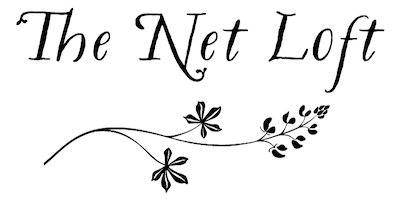
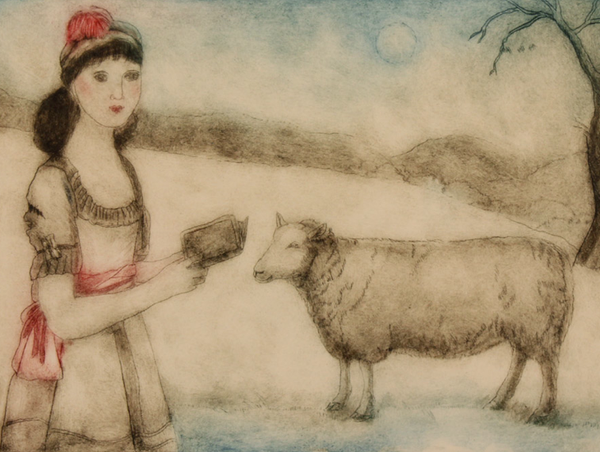
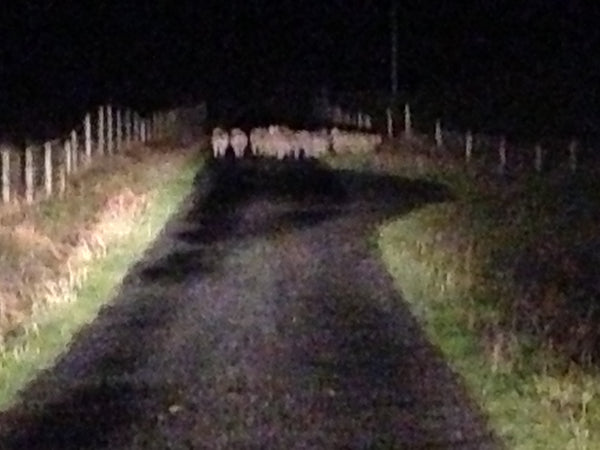
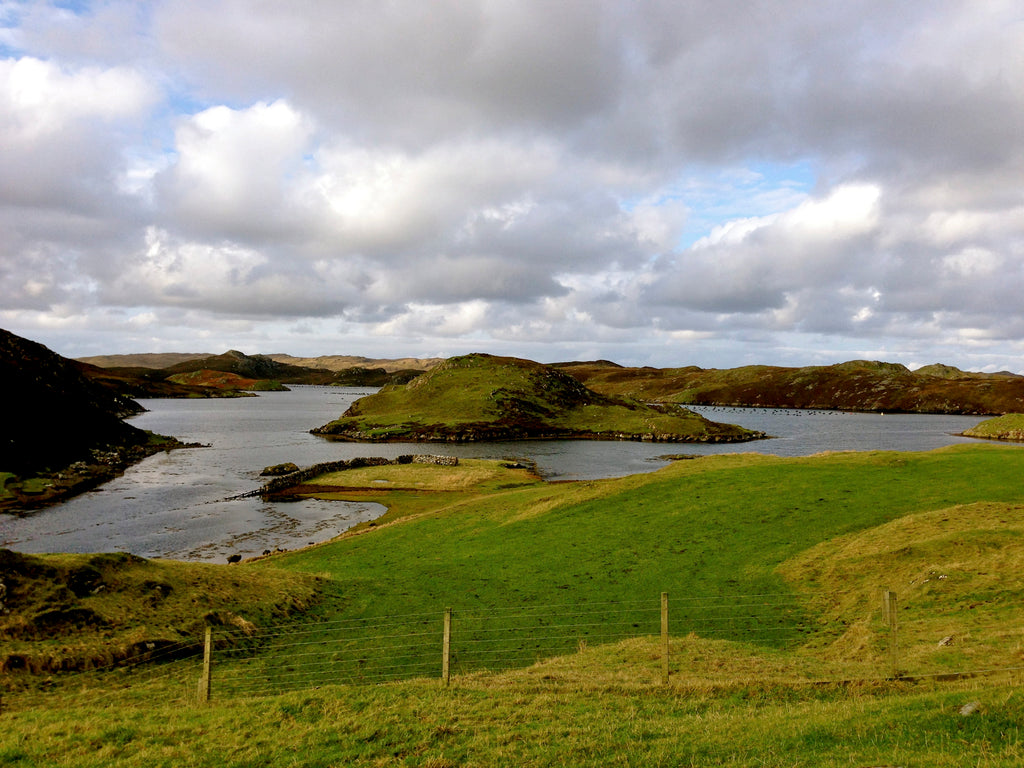

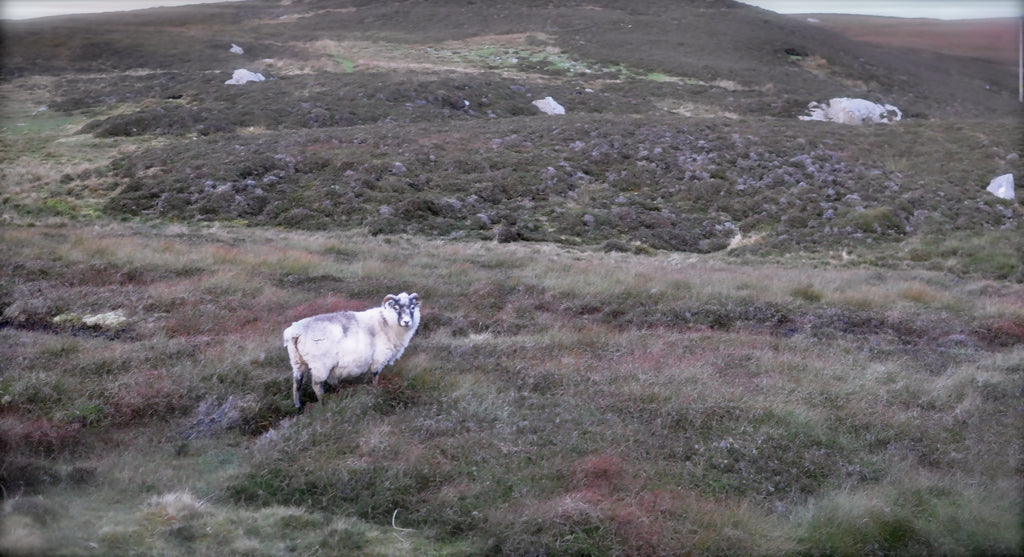

2 comments
ah dotty – you make me yearn for the north – i am so happy to be on this journey with you – to see our lives through your eyes – thank you
even though I am not a knitter, I have friends who are and I really enjoyed this crafting adventure story!